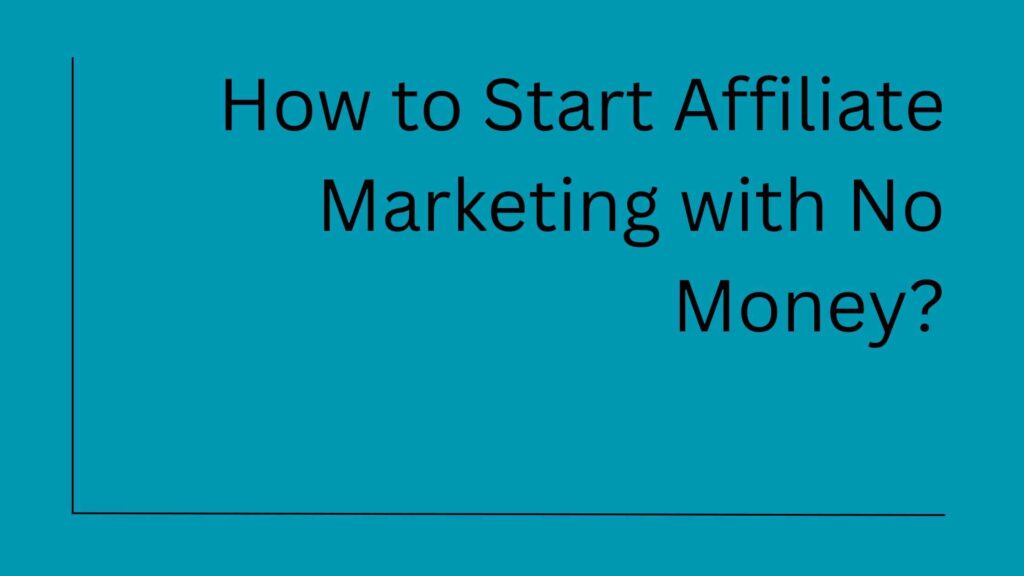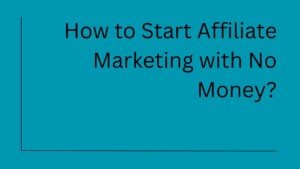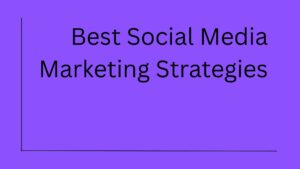You’ve probably seen those Instagram stories or YouTube videos where someone casually mentions a product, drops a link, and supposedly makes thousands of dollars while they sleep. That’s affiliate marketing, and it’s bigger than most people realize.
The affiliate marketing industry hit $17 billion in 2025 and is projected to reach $27.78 billion by 2027. It drives 16% of all ecommerce sales in the United States. If you’ve ever bought something an influencer recommended online, you’ve been on the receiving end of affiliate marketing.
Here’s what makes it appealing: brands partner with content creators to promote products, and creators earn a commission for each sale. No inventory, no shipping, no customer service headaches. Just recommendations and commissions.
But here’s the question everyone asks: Can you really start affiliate marketing without money?
The short answer?
Yes, absolutely. The longer answer involves understanding what “no money” actually means and what resources you’ll need instead.
The Reality of Starting Affiliate Marketing with Zero Budget
One common misconception is that affiliate marketing requires a significant upfront investment. People assume you need to spend money on a website, paid ads, fancy widgets, and marketing software tools to succeed.
That’s not true. Many successful affiliate marketers started their businesses with nothing more than a laptop and an internet connection.
However, while you don’t need money, you will need other resources. Time. Creativity. Patience. Consistency. These replace financial investment when you’re starting from zero. Affiliate marketing isn’t a get-rich-quick scheme; it’s a legitimate business model that requires effort.
The key is finding affiliate programs that don’t charge upfront fees. Most reputable programs like Amazon Associates, ShareASale(now Awin), HubSpot, and thousands of others offer free sign-ups and provide the tools you need to get started. If a program asks you to pay just to become an affiliate, that’s a red flag. Move on.
How To Start an Affiliate Marketing Business With No Money and Experience?
Step 1: Pick Your Product Niche First (Not Your Platform)
Here’s where most beginners mess up. They jump straight to choosing a social media platform or signing up for affiliate programs without figuring out what they actually want to promote.
Your niche determines everything else, which programs you join, where your audience hangs out, and what content you create. Getting this wrong means wasting months creating content nobody wants.
A good niche sits at the intersection of four factors:
Your interests and knowledge. It’s exponentially easier to promote products you understand or care about. If you’re passionate about fitness, promoting workout equipment feels natural. Trying to fake expertise in crypto when you don’t understand blockchain? That comes across as inauthentic, and audiences can smell it a mile away.
Profitability. Some niches simply pay better than others. According to 2025 data, affiliate marketers in education and e-learning earn an average of $15,551 monthly, while travel affiliates make $13,847. Beauty and skincare bring in $12,475. Meanwhile, parenting and personal development niches average only $1,145 and $1,566, respectively. The difference is substantial.
Demand. High commission rates mean nothing if nobody wants to buy the product. Research whether people are actually searching for and buying products in your niche. Tools like Google Trends show search interest over time. Rising interest is a good sign. Declining interest? Maybe look elsewhere.
Competition level. Popular industries like fashion and tech are saturated with established affiliates and big media brands. You’ll need serious creativity and likely some money to compete. Ideally, find niches with moderate demand but lower competition, what marketers call “underserved markets.”
Don’t try to be everything to everyone. Someone promoting dog food, craft supplies, skincare, and cryptocurrency simultaneously has zero credibility. Pick one lane and own it. Build expertise, authority, and trust within that specific niche. You can always expand later.
Step 2: Choose Your Marketing Platform Strategically
Once you know your niche, identify where your target customers actually spend time online. This determines where you’ll build your presence.
When you’re starting with zero budget, your traffic channels are limited to free platforms, primarily social media. The good news? There are 4.48 billion social media users globally, making it an incredible place to attract customers and earn affiliate income.
In theory, you could create accounts on every platform and maximize your reach. In practice, that’s a terrible idea. Each platform has unique formats, algorithms, and audience expectations. Creating quality content for all of them is a full-time job. Content that crushes on TikTok often flops on LinkedIn. What works on Pinterest (which operates more like a visual search engine) doesn’t work on Twitter.
Instead, choose one primary platform based on where your niche audience congregates. Use others to support it, but focus your energy on one.
YouTube remains one of the best platforms for affiliate marketing. Video content drives 82% of internet traffic, and YouTube videos show up in Google search results. The platform also pays creators through ads, giving you another income stream to reinvest in your business. YouTube lets you include clickable affiliate links in video descriptions, making it easy for viewers to purchase products you recommend.
Instagram has evolved from photos to include Reels, Stories, and IGTV. The challenge? You can’t share clickable affiliate links in regular posts. There’s only one link spot in your bio, which creates a bottleneck. Work around this using link-in-bio tools like Linktree, Beacons, or Stan Store, which create simple landing pages hosting multiple links. Instagram Stories allow links via the link sticker, though Stories disappear after 24 hours unless you save them as Highlights.
TikTok has exploded for affiliate marketing. According to 2025 data, 26% of marketers used TikTok for the first time in 2023, and 56% increased their TikTok investment. Short-form video is king right now, with 90% of marketers planning to maintain or increase short-form video content. TikTok’s creator-friendly algorithm can give you reach even with zero followers.
Facebook still dominates with nearly 3 billion monthly active users. You can post affiliate links in posts and comments. Create a separate business page or group rather than spamming your personal profile. Your friends don’t want to see constant product promotions. Facebook groups work particularly well for building a community around your niche. According to 2025 statistics, Facebook delivers the best ROI for 22% of marketers, tied with YouTube, Instagram, and TikTok at 16% each.
LinkedIn works best for B2B marketing. The professional audience makes it ideal for promoting business software, courses, and services. You can include affiliate links in LinkedIn articles, posts, company updates, and even direct messages. The platform’s recent updates also support links in photos and videos.
Pinterest functions more like a visual search engine than social media. It’s excellent for niches like home decor, fashion, recipes, and DIY projects. Pinterest drives significant traffic to blogs and websites, making it a strong choice if you eventually want to build your own site.
The platform you choose determines your content strategy, but your customers decide where you post. Research where your target audience actually spends time. Creating amazing content on Reddit when your customers are all on Instagram wastes effort.
Important: Always disclose your affiliate relationships. The FTC requires it, and transparency builds trust with your audience. A simple “This post contains affiliate links” in your content or bio covers you legally and ethically.
Step 3: Join the Right Affiliate Programs
Now that you’ve picked your niche and platform, identify affiliate programs offering products your audience wants.
Here’s how to find them:
Search directly. Type “[your niche] affiliate programs” into Google. If you’re in the fitness niche, search “fitness affiliate programs” or “supplement affiliate programs.” You’ll find companies offering partnerships.
Join affiliate networks. Networks like Awin, PartnerStack, and CJ Affiliate connect you with thousands of brands across industries. Most are free to join, though some charge small fees. ShareASale is one of the top networks with no joining fee, though they have transaction fees. These networks simplify finding programs in your niche and managing multiple partnerships from one dashboard.
Check what competitors promote. Look at other successful affiliates in your niche. What programs do they mention? What products do they recommend? You can often identify affiliate links by their structure (they usually contain tracking parameters or redirect through known affiliate platforms).
Ask brands directly. If there’s a brand you love that fits your niche, check its website footer. Many companies have “Affiliate Program” or “Partners” links. Some brands not actively advertise programs will still create partnerships if you have an engaged audience.
When evaluating programs, consider these factors:
Commission structure. Two main models exist: pay-per-click (you earn when someone clicks your link) and pay-per-sale (you earn when someone buys). Pay-per-sale is more common and typically pays better, though conversion rates are lower. SaaS and digital products often offer 20-70% commissions. Physical products usually pay 1-10%. According to 2025 data, 48.9% of programs offer flat-rate payments, while 42.4% pay percentage commissions.
Cookie duration. This is how long after someone clicks your link you still get credit for their purchase. Longer is better. Some programs offer 24 hours, others 30 days, and some like Amazon Associates only offer 24 hours. HubSpot offers an impressive 180-day cookie.
Payment terms. Will you get paid monthly or only after hitting a minimum threshold? Most programs have minimum payouts ranging from $10 to $100. Payment methods also matter; some only pay via PayPal, others offer direct deposit or checks.
Brand reputation. Only promote products from reputable companies. Your reputation is on the line when you recommend something. If the product is garbage or the company has poor customer service, it reflects badly on you.
Product demand. A 50% commission on a product nobody wants is worthless. Research whether people actually buy what you’re promoting. Read reviews, check sales ranks, analyze search volume.
Top beginner-friendly programs for 2025 include:
- Amazon Associates: Huge product catalog, low commissions (1-10%), 24-hour cookie
- ShareASale: 16,500+ merchants across niches, free to join
- HubSpot: 30% recurring commissions, 180-day cookie, free to join
- Shopify: 200% commission on average order value for entrepreneurs
- PartnerStack: SaaS-focused, some programs pay 50% or $2,000+ per sale
Step 4: Master Keyword Research (The Free Way)
Getting your content in front of your target audience requires understanding what they’re searching for. This is where keywords come in.
Keywords are the terms people type into search engines and social media platforms. If prospects search “keto meal plan,” they’re looking for keto content. If you optimize your content around that phrase, you’re more likely to be found.
Keywords matter everywhere, not just blogs. YouTube videos rank in Google. Instagram posts with the right hashtags get discovered. Pinterest pins appear in search results. Understanding keywords helps you on every platform.
Here’s how to do keyword research for free:
Use Google’s suggestions. Start typing your topic into Google and look at the autocomplete suggestions. These are real searches people make. Type “keto” and Google suggests “keto diet,” “keto recipes,” “keto meal plan,” etc. Write these down.
Check “People Also Ask” and “Related Searches.” Scroll to the bottom of Google search results. You’ll find “Related searches” showing terms connected to your query. The “People Also Ask” boxes reveal questions people want answered. These are gold for content ideas.
Use social media search features. On Instagram, type a hashtag like #keto and look at the related hashtags that appear. You’ll see how many posts use each tag, showing which are most popular. Do the same on TikTok, YouTube, and Pinterest. This reveals what content performs well on each platform.
Try free keyword tools. Ubersuggest offers limited free searches. Google Keyword Planner is free if you have a Google Ads account (you don’t need to run ads). Moz Keyword Explorer gives you 10 free queries per month. These tools show search volume, difficulty, and related keywords.
Analyze competitor content. Look at the top-performing content in your niche. What keywords do they target? How do they structure content? You’re not copying, you’re learning what works and creating your own better version.
Create a spreadsheet of relevant keywords. Note search volume (how many people search it) and difficulty (how hard it is to rank). Target a mix of high-volume, competitive terms and low-volume, easy terms. The easy wins build momentum while you work on the harder ones.
Step 5: Create Content That Actually Converts
Today, most affiliate content is garbage. Generic product descriptions copied from Amazon. Fake reviews of products the creator never used. Lists of “top 10” anything stuffed with affiliate links but zero genuine insight.
That content might get clicks, but it doesn’t build trust or drive sales. If you want to succeed long-term, create content that actually helps people.
Quality content has three characteristics:
Relevance. Address your audience’s actual pain points and questions. Don’t write about what you want to write about, write about what they need to know. Someone searching “best running shoes for flat feet” doesn’t want a history of running shoes. They want specific product recommendations with reasons why those shoes work for flat feet.
Engagement. Make content easy and enjoyable to consume. Use conversational language, break up text with images or bullet points, tell stories, and inject personality. Avoid drowning people in technical jargon unless your audience is technical. Most aren’t.
Attractiveness. Display content in a visually appealing way. Use eye-catching titles. Create cohesive color schemes. Keep layouts simple and clean. On video platforms, invest in decent lighting and audio; they’re more important than camera quality.
Your content format depends on your platform. If you’re on YouTube, turn blog post ideas into video scripts. If you’re on Instagram, create carousel posts explaining concepts visually. Match the format to where your audience consumes content.
Pay attention to search intent, what someone actually wants when they search a term. “GetResponse vs Mailchimp” signals they want a comparison. “GetResponse review” means they want an in-depth analysis. “How to set up email automation” indicates they need a tutorial. Create content matching that intent.
Certain content types convert better than others. According to industry data:
- Comparison posts (“Product A vs Product B”) convert extremely well because people are close to making a decision
- Reviews work when thorough and honest, including pros, cons, and who the product is (and isn’t) for
- Best of listicles (“Best X for Y”) are perennial performers
- How-to guides attract people early in the customer journey and build authority
The key is being genuinely helpful. Don’t just slap affiliate links everywhere. Explain why you’re recommending something, share your actual experience, note downsides honestly. This builds trust, and trust drives conversions.
Step 6: Engage Consistently With Your Audience
Content creation is only half the battle. Building relationships with your audience is what separates successful affiliate marketers from those who quit after three months.
According to Gallup insights, engaged customers are more loyal and generate more revenue than average customers. Engagement isn’t optional; it’s essential.
Start by responding to comments and questions promptly. When someone takes time to engage with your content, acknowledge them. Answer questions thoughtfully. Thank people for their kind words. Address concerns directly. This shows you’re not just broadcasting, you’re building a community.
Consistency matters enormously. Posting twice a week every week beats posting ten times one week, then nothing for a month. Algorithms reward consistency, pushing your content to more people. More importantly, audiences reward consistency by forming habits around your content.
Create a posting schedule you can actually maintain. If you can only manage one quality post per week, do that. Don’t burn yourself out trying to post daily when you don’t have time. Sustainable consistency wins.
Engagement goes both ways. Don’t just respond when people comment on your content. Go find conversations in your niche. Comment on other creators’ posts. Participate in relevant groups and forums. Share your expertise without constantly dropping affiliate links (that’s spammy). Build genuine connections.
As your audience grows, consider creating exclusive spaces for your community. Facebook groups, Discord servers, and email newsletters give you direct access to your most engaged followers. They also insulate you somewhat from algorithm changes on platforms you don’t control.
Step 7: Track Your Performance Religiously
Most beginners skip tracking entirely. They post content, share affiliate links, and hope for the best. Months later, they have no idea what’s working or why.
Don’t do this. Tracking is how you identify what converts and what doesn’t. It’s how you optimize your strategy and increase earnings over time.
Start with the analytics provided by your affiliate programs. These typically include:
- Clicks: How many people clicked your affiliate links
- Conversions: How many of those clicks resulted in sales
- Earnings per click (EPC): Average earnings per click on your links
- Total earnings: Your commission totals
- Top products: Which products generate the most commissions
Review these numbers regularly. Weekly check-ins work well when starting. Notice patterns. Maybe product reviews convert better than general niche content. Maybe Tuesday posts get more engagement than Friday posts. Maybe certain products sell way better than others.
Use UTM parameters to get deeper insights. These are tags you add to links that track where traffic comes from. For example:
youraffiliatelink.com?utm_source=instagram&utm_medium=story&utm_campaign=product123
This tells you that click came from an Instagram Story promoting product 123. When you see which content and platforms drive the most sales, double down on those.
Don’t forget platform analytics. YouTube Analytics shows watch time, traffic sources, and demographics. Instagram Insights reveals post reach and engagement. Facebook Analytics tracks link clicks and post performance. These metrics help you understand your audience and refine your content strategy.
High engagement often correlates with trust, which leads to more conversions. If a post gets tons of comments and shares, that indicates resonance. Look for ways to create more content like it.
Track your time investment too. Calculate rough hourly earnings by dividing affiliate income by hours spent. This helps you identify if you’re focusing energy on high-value activities or wasting time on busywork.
Common Mistakes to Avoid When Starting with Zero Investment
Learning from others’ mistakes saves you months of frustration. Here are the biggest traps beginners fall into:
Promoting everything. Desperation leads people to join dozens of programs and promote everything. This dilutes your message and confuses your audience. Pick a few quality products you genuinely recommend and focus on those.
Expecting instant results. Affiliate marketing builds slowly. The average affiliate marketer with less than a year of experience earns $636 monthly. After 1-2 years, that jumps to $4,196. After 3-5 years, it’s $10,789. Those with 5+ years average $21,934 monthly. This is a long game.
Ignoring FTC disclosure requirements. Legally, you must disclose affiliate relationships. “This post contains affiliate links” in your bio or content covers you. Don’t hide this transparency; it builds trust anyway.
Creating content without a strategy. Random posting rarely works. Plan your content around keywords, audience needs, and product launches. Strategy beats luck every time.
Not building an email list. Social media platforms can ban your account or change algorithms overnight. Email lists you own. Start collecting emails early, even with a free tool like Mailchimp’s free tier.
Giving up too soon. Most affiliate marketers quit before they see results. Success requires at least 6-12 months of consistent effort. The ones who make it are simply the ones who didn’t quit.
Setting Realistic Marketing Outcomes & Expectations
Let’s be honest about what starting affiliate marketing with no money actually looks like.
According to 2025 data, 57.6% of affiliate marketers earn less than $10,000 annually. The average monthly income is $8,038, but that includes the top earners who skew the average upward. For beginners, expect closer to $0-$500 monthly for the first six months.
This isn’t meant to discourage you; it’s meant to set realistic expectations. Affiliate marketing isn’t a get-rich-quick scheme. It’s a legitimate business model that rewards consistency, patience, and continuous learning.
The good news?
Those who stick with it see real results. The average return on investment for businesses using affiliate marketing is $15 for every $1 spent, a 1,400% ROI. For affiliate marketers themselves, income tends to grow exponentially with experience rather than linearly.
Starting with no money means you’ll grow slower than someone who can invest in paid traffic or professional content creation. But slow growth is still growth. Every small win compounds. The affiliate who earns their first $10 commission has crossed a mental barrier. The one who hits $100 in a month realizes it’s scalable. The one making $1,000 monthly has a legitimate side income.
Focus on building sustainable systems rather than chasing quick wins. Create evergreen content that generates traffic and commissions for years. Build an audience that trusts your recommendations. Develop skills in content creation, SEO, and audience building.
Final Words
Affiliate marketing with no money is absolutely possible. It requires substituting time and effort for financial investment. It demands patience when results feel slow. It needs consistency when motivation wanes.
But for those willing to put in the work, it offers a genuine opportunity. The industry is growing at 8-10% annually. By 2026, over 90% of ecommerce businesses are expected to use affiliate marketing. Mobile affiliate marketing is projected to drive 65% of affiliate clicks by 2027. The opportunity is expanding, not shrinking.
Start today. Pick your niche based on the intersection of your interests, profitability, demand, and competition. Choose one platform where your audience lives. Join free affiliate programs offering products they want. Learn basic keyword research to get your content found. Create genuinely helpful content that builds trust. Engage consistently with your growing audience. Track everything to identify what works.
This isn’t complicated, but it isn’t easy either. The affiliate marketers making six figures aren’t smarter or luckier than you. They simply started, stayed consistent, and didn’t quit when results came slowly.
Your first commission might take weeks or months. Celebrate it anyway. Your first $100 month will feel like a massive milestone. It is. These small wins build momentum toward bigger goals.
Affiliate marketing rewards those who provide value, build trust, and stay persistent. If you’re willing to invest the time and effort, the financial investment is optional.
So stop researching and start doing. Open that social media account. Join your first affiliate program. Create your first piece of content. The perfect time to start doesn’t exist. Good enough to start is good enough.
Your affiliate marketing journey begins with a single post. Make it today.





